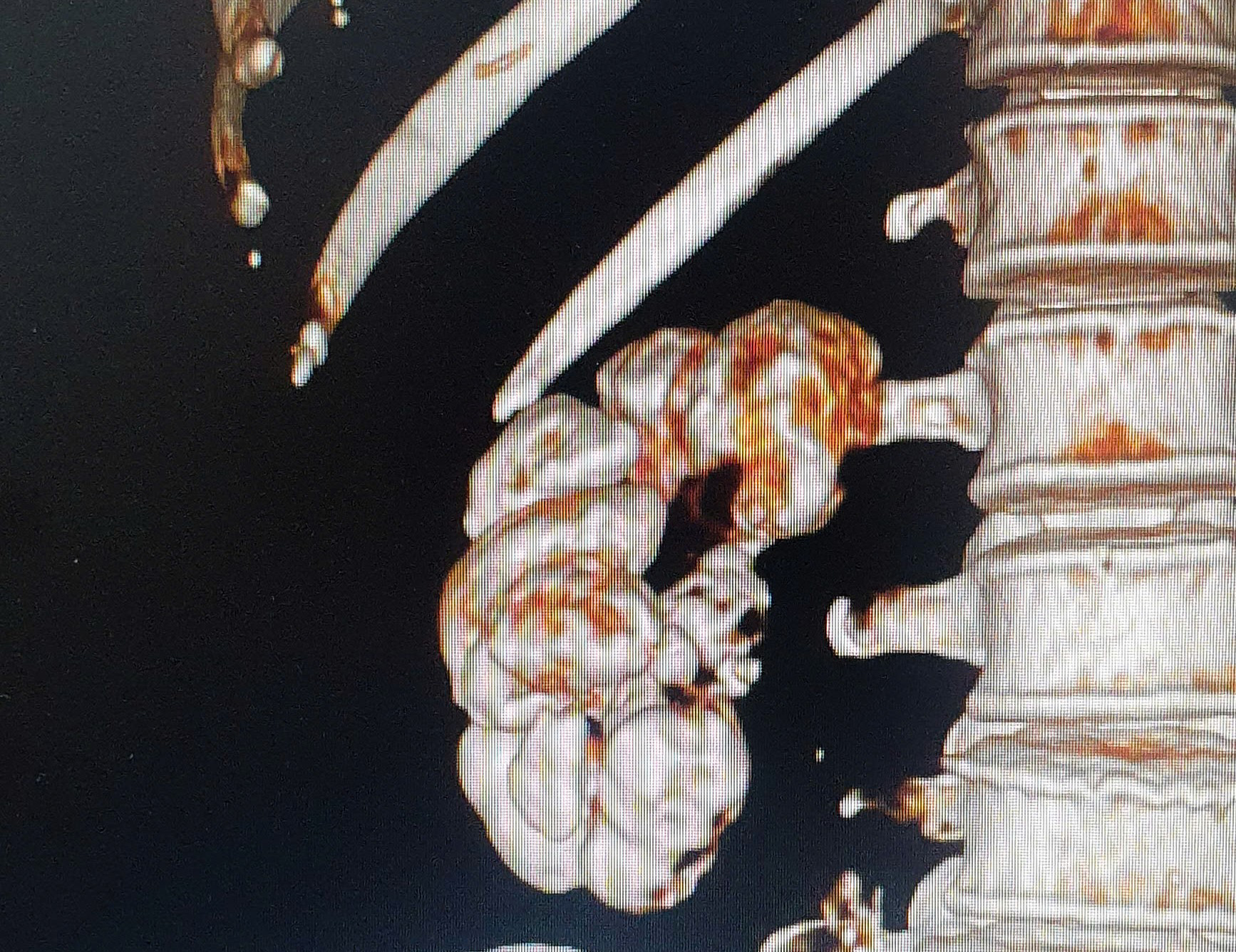Doctor Cao Vinh Duy, from the Department of Urology at Tam Anh General Hospital's Urology - Nephrology - Andrology Center in Ho Chi Minh City, reported that Mai's right kidney had grade 4 hydronephrosis with purulent fluid. CT scans revealed complete calcification of the kidney—also known as a "stone" kidney—appearing white and not absorbing contrast dye, indicating complete loss of kidney function.
Dr. Duy suspected chronic renal tuberculosis, a bacterial infection affecting the kidneys and other parts of the urinary tract. Tuberculosis bacteria attacking the kidneys can cause inflammatory lesions, necrosis (caseous type), hydronephrosis, and changes in kidney structure and function. In severe cases like Mai's, it can lead to complete kidney destruction and calcification due to calcium deposits in the kidney tissue.
 |
CT scan showing the calcified, non-functional right kidney. Photo: Tam Anh General Hospital |
Doctors performed laparoscopic surgery to remove the entire right kidney. On the laparoscopic screen, the "stone" kidney appeared rough with yellow pus, and the shrunken renal artery was unable to supply sufficient blood. Post-operative kidney tissue analysis confirmed caseous necrosis, consistent with renal tuberculosis.
Mai is undergoing regular follow-up appointments to assess the function of her remaining kidney and is taking anti-tuberculosis medication to completely eradicate the bacteria.
 |
Dr. Vinh Duy (right) with Dr. Vo Xuan Huy performing the laparoscopic right nephrectomy on Mai. Photo: Tam Anh General Hospital |
According to Dr. Duy, renal tuberculosis often presents no noticeable symptoms in its early stages. As calcification progresses, symptoms such as back pain, painful urination, and blood in the urine may appear. Without timely treatment, renal failure can occur, leading to complete loss of kidney function.
Treatment for renal tuberculosis involves a combination of antibiotics to eliminate the bacteria and prevent drug resistance. If medical treatment is ineffective, surgery may be considered for severely damaged kidneys (partial or complete nephrectomy), depending on the patient's condition.
Anyone experiencing symptoms suggestive of tuberculosis should seek immediate medical attention to reduce the risk of the bacteria spreading to the kidneys. Screening can be done through laboratory tests, tissue biopsies, and imaging techniques like X-rays, ultrasounds, CT scans, and MRI scans.
Ha Thanh
*The patient's name has been changed












